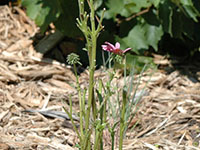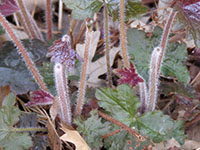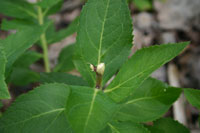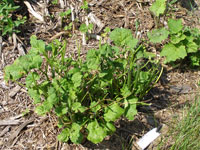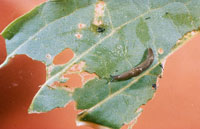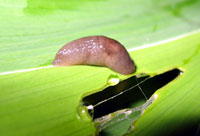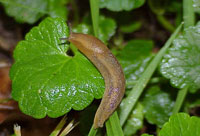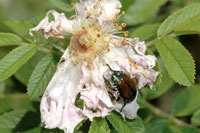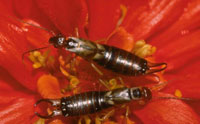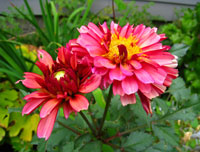Extension > Garden > Diagnose a problem > What's wrong with my plant? > Annuals and Perennials > Zinnia > Holes in leaves or leaves chewed off
Zinnia > Leaves > Holes in leaves or leaves chewed off
1 of 5
Rabbit
- All or large sections of leaves are cut off and missing, leaving only a stem or petiole
- Plants are cut off with a clean-cut angle (45°), not ragged
- Animal foot prints or droppings may be seen near plant
- Damage often happens suddenly, often overnight
2 of 5
Deer
- All or large sections of leaves are cut off and missing, leaving only a stem or petiole
- Plants are not cut off clean, but ragged
- Animal foot prints or droppings may be seen near plant
- Damage often happens suddenly, often overnight
3 of 5
Slugs
- Occurs spring and summer
- Chews ragged, irregular shaped holes in leaves that cross the veins
- Silvery shiny winding trails may be seen on leaves
- Soft-bodied, brownish, up to two or more inches long; snails without shells
- Feeds primarily at night
- More information on slugs
4 of 5
Japanese Beetle
Popillia japonica
- Adults present late June/early July to August
- Skeletonize leaves, i.e. chews tissue between veins, leaving foliage lace-like
- Chews holes in blossoms
- Adults are a brilliant metallic green with copper-brown wing covers, approximately 3/8 inches in length, five white patches of hairs on each side of the abdomen, and two patches of white hair on the tip of abdomen
- More information on Japanese Beetles
5 of 5
European Earwig
Forficula auricularia
- Adults active from late June or early July into fall
- Chews irregular shaped holes in leaves and blossoms
- Adults are 5/8 to ¾ inches long, reddish brown with short wings; pincher-like cerci on end of abdomen
- Most active at night
- More information on European Earwigs




